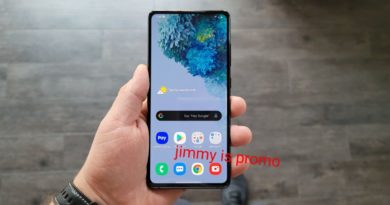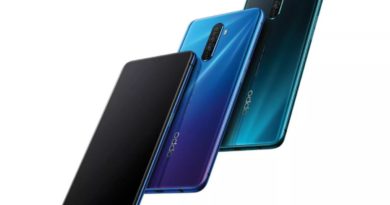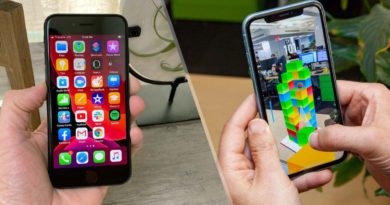Samsung Galaxy Z Fold 2 — here’s how it can avoid the original’s failures
You may never get a second chance to make a first impression, but Samsung is clearly hoping that the Galaxy Z Fold 2 makes you forget all about the bumpy road that phone’s predecessor had in launching last year.
But Samsung hasn’t forgotten — that became clear during last week’s Galaxy Z Fold 2 preview when the phone maker spent more time talking about its efforts to shore up the design of its foldable phone than it did about the phone’s features.
More details about the Galaxy Z Fold 2 are coming — Samsung plans to reveal additional information about the device on Sept. 1, at which time we’re likely to hear about specs, pricing and availability. For now, though, the impression Samsung wants to leave us with is that it learned from the mistakes with the original Galaxy Fold’s launch — and it has no intention of repeating them.
What went wrong with the Galaxy Fold
In case you’ve forgotten about the Galaxy Fold’s initial stumbles, here’s a quick recap of what Samsung holds to avoid with the sequel. The company previewed its first foldable phone at a February 2019 Unpacked event — the same place where the Galaxy S10 made its debut. Samsung’s plan was to build up some word-of-mouth for the Fold by giving reviewers early access to the phone, then launching it in April.
There was just one problem — some reviewers ran into problems with the Galaxy Fold that revealed some design issues. A protective layer over the folding display was too easy to peel back, causing damage to the screen. In another instance, debris got into the Fold via a gap around the phone’s hinge, settling behind the screen. Ultimately, Samsung postponed the April launch to work on solving these flaws before the Fold got in the hands of the general public.
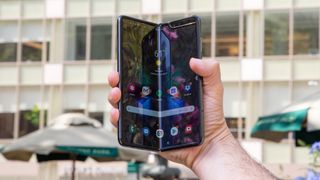
To that end, Samsung extended the protective layer over the display, with an eye toward it more clear you weren’t supposed to remove it. Protective caps were added to the top and bottom of the hinge while Samsung inserted metal layers underneath the display to help keep out dirt. The revised Galaxy Fold finally launched last September.
And you know what? It wasn’t that bad of a phone. We like the ability to multitask with the original Galaxy Fold, and there’s no denying Samsung came up with an innovative design, letting you unfold the phone like a book to reveal a 7.3-inch screen inside. But the plastic screen felt a little flimsy, and we wished the external display was larger than the 4.5-inch screen Samsung used. That’s a lot of complaints for a $1,980 phone that costs twice as much as most flagships.
What Samsung is doing different with the Galaxy Z Fold 2
A lot of the changes Samsung made prior to the original Galaxy Fold’s have clearly influenced Samsung’s approach to the Galaxy Z Fold 2. But as Samsung outlined during its August 5 Unpacked event, the new foldable reflects other changes meant to improve upon the original. “Our designers thought of every last detail and didn’t compromise on anything,” Samsung’s Victor Delgado said when introducing the redesigned Fold 2 during Unpacked.
For one thing, Samsung set about to optimize the layers that make up the Galaxy Z Fold 2’s display rearranging the physical interaction between soft and rigid layers. That’s supposed to enhance the strength of the screen, while adjusting the property and thickness of the adhesive used in the display should keep it flexible, even in high temperatures.
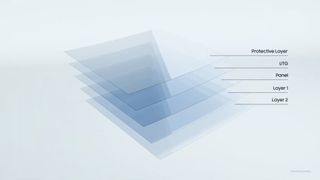
Samsung has continued to refine the hinge that opens and shuts the Fold, with more than 60 components moving in unison when you open up the phone. There’s still a gap, because that allows the panels in the Fold to come together to form the main screen. To guard against any debris that might make it through, Samsung uses bristles made up of carbon and nylon fibers — a design approach inspired by a vacuum cleaner commercial. Those bristles are under the hinge, sweeping away particles any time the hinge moves; for the Galaxy Z Fold 2, Samsung says it managed to make the bristles smaller.
“There’s clearly be a conscious effort to improve on previously technical and quality issues,” said Tuong H. Nguyen, a senior principal analyst with Gartner. “This was underscored by the video/ad [Samsung] showed for the new Z Fold. It felt like it was the most extensive prepared video during the whole event.”
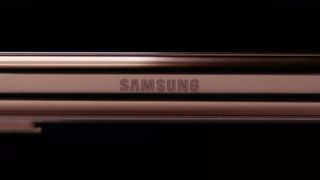
One of the biggest design changes was inspired by Samsung’s other foldable — the Galaxy Z Flip. That flip phone-style foldable features a layer of ultra thin glass which makes a world of difference when you touch the display. It makes the entire device feel more durable. So Samsung is adding it to the Galaxy Z Fold 2.
That’s a noteworthy change, said Avi Greengart, lead analyst at Techsponential. “I have had a Galaxy Z Flip since it launched, and after months of daily use there are no scratches or tears,” said Greengart, and it’s clear that Samsung is hoping for a similar experience with the Z Fold 2.
Other Galaxy Z Fold 2 changes
Samsung drew on the Galaxy Z Flip for inspiration in other ways. You’re able to open that phone at different angles, with the display remaining in place. Samsung’s adapting that for the Galaxy Z Fold 2, which required the phone maker to double up on the CAM mechanism that it uses in the hinge to slide the different parts of the display into place.
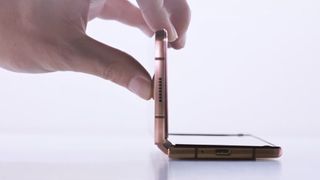
When that happens on the Galaxy Z Flip, you’re able to go into Flex mode where some apps allow you to use different parts of the screen for different functions. (In the camera app, for example, the top part of the Galaxy Z Flip display becomes a view finder while the bottom features camera controls.) Samsung hasn’t said whether Flex Mode is making its way to the Galaxy Z Fold 2 as well, but it seems likely that it will.
The Galaxy Z Fold 2 also reflects feedback Samsung received from users about the original Fold. As it turns out, Fold users said they relied on the exterior display as much as the extended interior panel, so Samsung’s extending it in the Z Fold 2. The new phone features a 6.2-inch full cover display, which presumably will continue to support App Continuity, where you can open the phone up and resume using the app you had open on the outer screen.
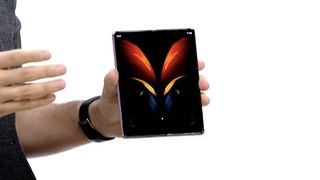
The exterior display isn’t the only screen getting bigger on the Galaxy Z Fold 2. Inside, the full display has grown to 7.6 inches, which Samsung achieved by getting rid of the much despised notch that housed the front cameras. For the Z Fold 2, there’s an Infinity-O panel housing the front camera in a punch-hole cutout.
What we still don’t know about the Galaxy Z Fold 2
Despite Samsung’s Galaxy Z Fold 2 preview, there’s still a lot we don’t know about the phone. Samsung expects to fill in more details on Sept. 1, when the new phone will be available for pre-orders.
Samsung hasn’t told us what processor is going to power the Galaxy Z Fold 2, but considering that the original ran on a Snapdragon 855 — the most powerful Qualcomm chipset at the time — it’s looking like Samsung would either turn to the Snapdragon 865 or 865 Plus for its new phone. That would also mean 5G connectivity, which Samsung alluded to during the August 5 preview by casually mentioning playing games over 5G with the Fold.
We don’t know specifics about the Galaxy Z Fold 2’s battery, other than the fact that Samsung is promising all day battery life. One rumor suggested the battery would be smaller in this version, but that’s hard to believe considering the original Fold’s 4,380 mAh kept it powered for just over 10 hours on our battery test.
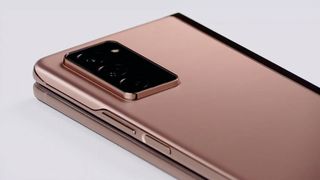
From a shot of the exterior of the Galaxy Z Fold 2, it looks like Samsung is planning on using three rear cameras along with that front camera on the inside of the phone. Your guess as to what the particular specs are for those cameras are as good as ours.
There’s also the small matter of how much the Galaxy Z Fold 2 will cost — and that price doesn’t figure to be small at all, given all the improvements Samsung is touting. With the original phone approaching the $2,000 mark, it seems likely Samsung will ask a similar price for the sequel, especially with the company stressing the phone’s ability to deliver “premium experiences.”
“I think [price is] especially important because in the pandemic environment, many consumers may be less willing or able to afford luxuries previously available to them,” Nguyen said.
Techsponential’s Greengart has just one question building up Sept. 1 and the revelation of further details about the Galaxy Z Fold 2.
“This is a new technology category, and it will be priced accordingly,” said Greengart. “But my biggest question is when can I get one?”
